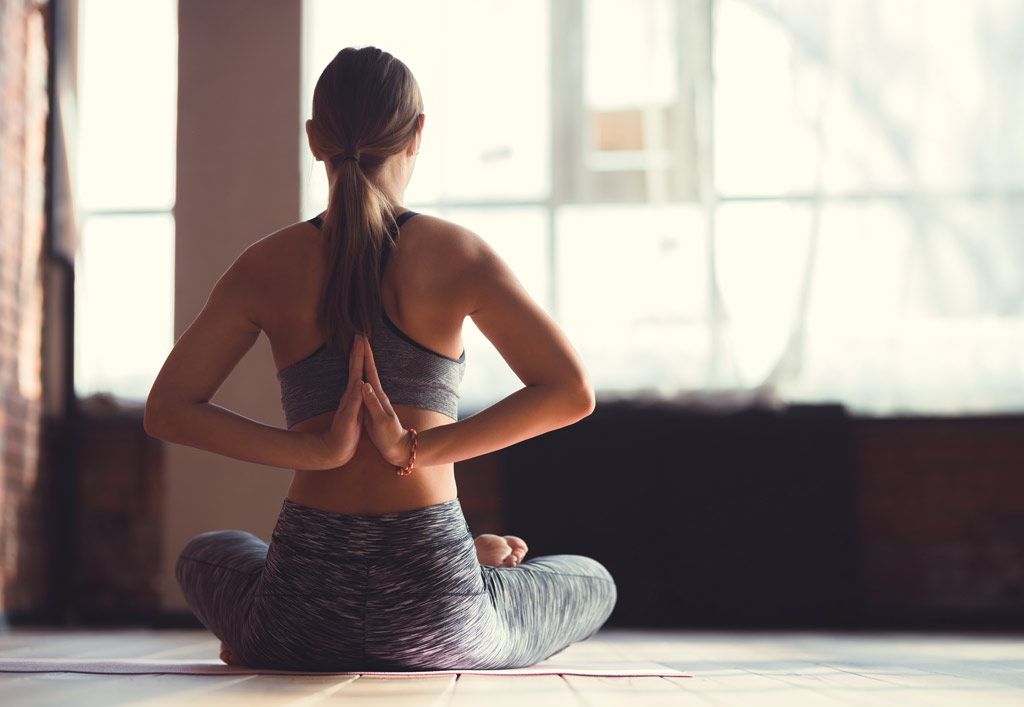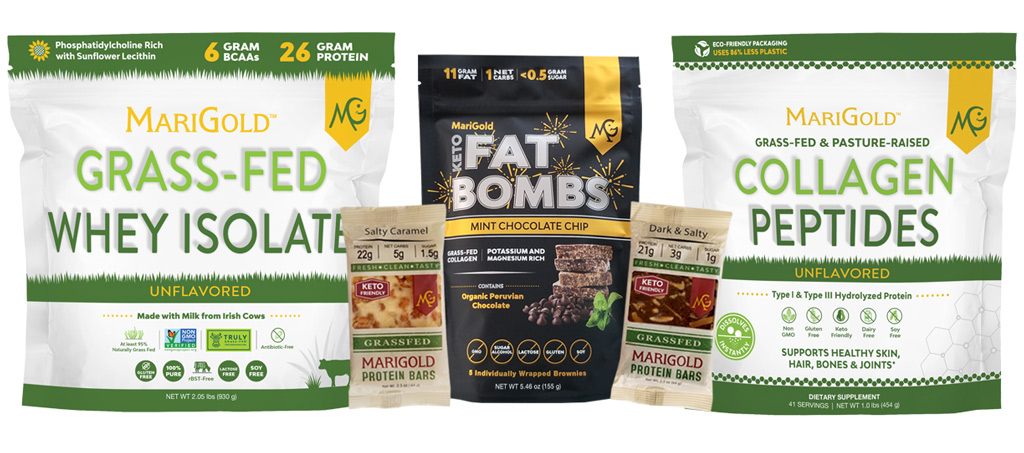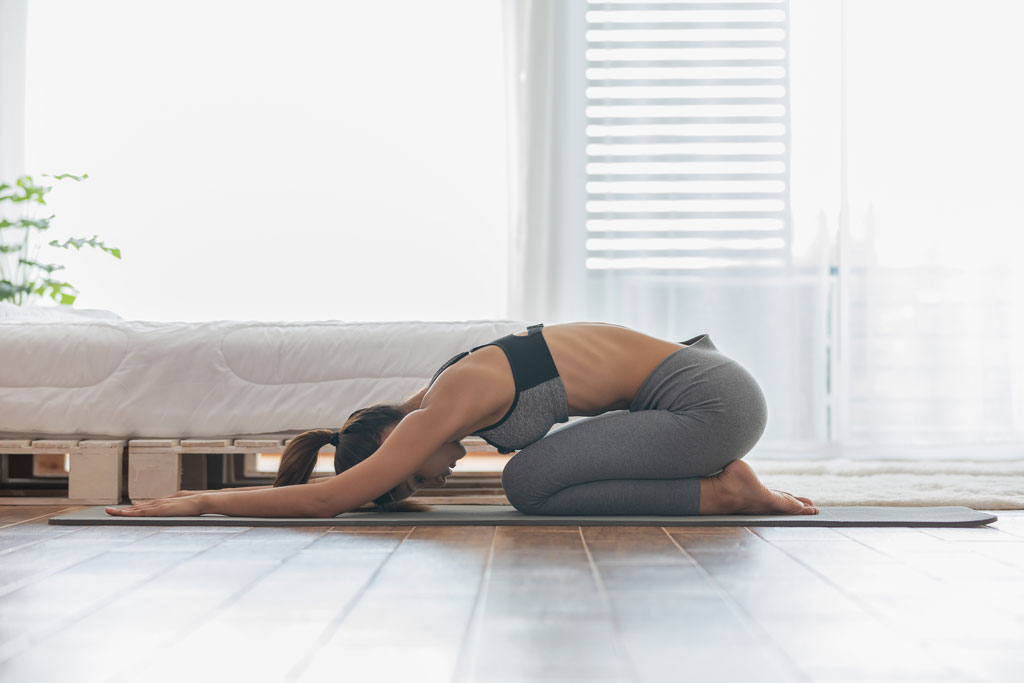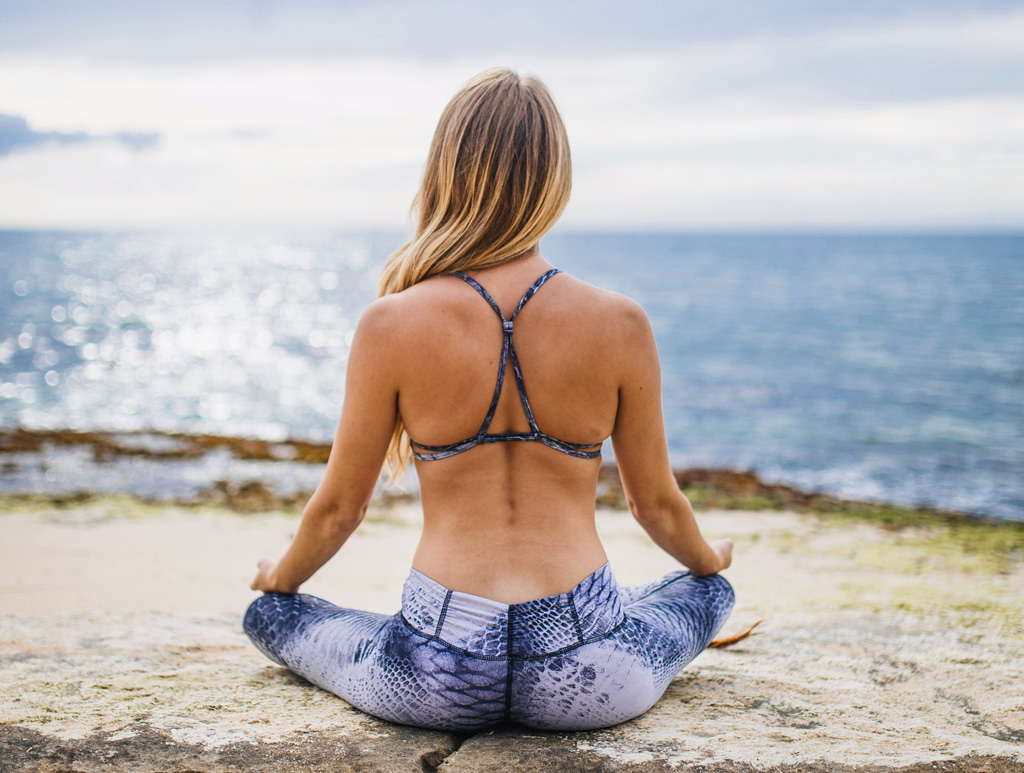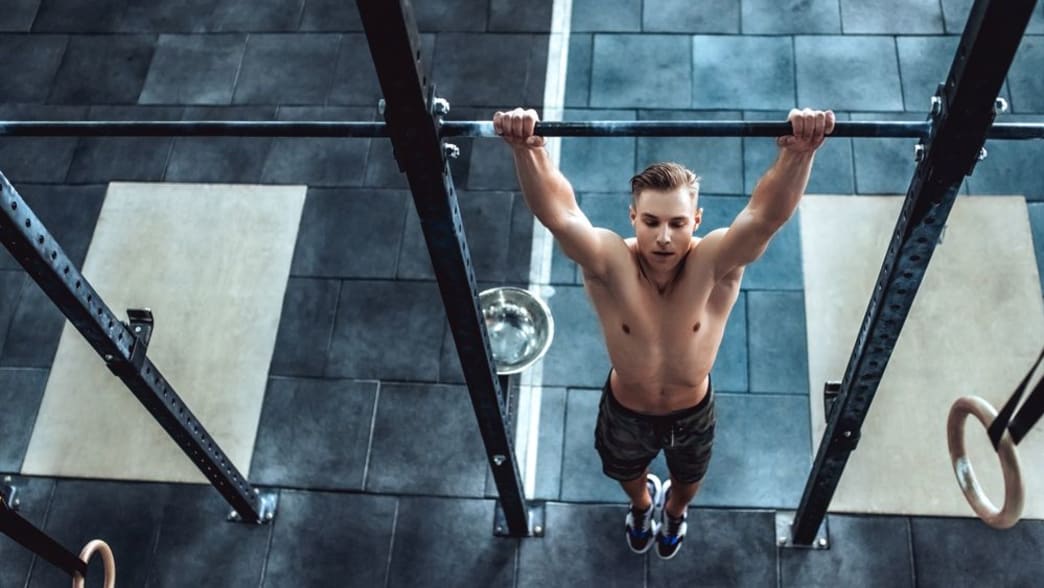Here’s how to keep your spine safe and healthy from top to bottom and improve your results in the process.
Maintaining spinal integrity during exercise is paramount, but keeping your spine safe goes beyond the simple directive of maintaining good posture when performing big or heavy movements. It also expands into programming, workout timing and more. Here’s how to keep your spine safe and healthy from top to bottom and improve your results in the process.
Cervical Spine
Without your cervical spine, you’d lose your head — literally. This area consists of seven vertebrae originating at the bottom of your skull and running down your neck to shoulder/clavicle height. It works to support your head, move your spine and protect your spinal cord.
A common instruction when lifting is to maintain a neutral spine, but a lot of people neglect to include the cervical spine in that directive. No matter what compound movement you’re performing, your head should follow your torso every step of the way. You should never be looking up (hyperextending) or looking down (rounding over), which can cause compression in the cervical disks. And because the neck muscles that stabilize this area are much smaller and less powerful than the big spinal erectors that support the lumbar and thoracic spine, they are more easily injured.
Aside from executing proper form 24/7, strengthening the muscles that support the cervical spine 360 degrees around will help you maintain proper head posture during your workout and in all your life activities.
Do these two exercises preworkout to prep for the bigger compound movements to come.
 Oxygen Magazine
Oxygen Magazine
Neck Raise
Do three to four sets of 30-second holds.
Lie faceup with your arms bent 90 degrees on either side of your head, palms facing up. Actively press your arms and hands down into the floor as you lift your head and neck up as far as you can without tucking your chin. Lower to the start and rest briefly, then repeat.
 Oxygen Magazine
Oxygen Magazine
Chin Tuck
Do six sets of 10-second holds.
Stand with your back to a wall so your shoulders and glutes are touching and your heels are against the baseboard. Gently tuck your chin into your neck, and push the back of your head into the wall, gradually increasing the force as if you were trying to leave an impression. Release, rest briefly, then repeat.
Thoracic Spine
The thoracic spine consists of the 12 vertebrae located in your upper and middle back, originating at the end of the cervical spine and extending about 5 inches beyond the shoulder blades to the top of the lumbar spine. Your ribs are attached on either side to each thoracic vertebra, and those attached to T1 through T10 are also anchored in the front at the sternum.
Because this section of your spine is designed to protect and house your heart and lungs, it is fairly rigid and has limited mobility. What movement it does have is used for rotation. However, most people do not have very good mobility in this area, and this lack of rotational capacity is usually compensated for by the lumbar region. Since your thoracic spine should have about five times the rotational capacity of your lumbar spine, this is problematic. Strengthening and mobilizing this area is imperative to protect your lower back while improving performance.
Use these moves to mobilize your thoracic spine preworkout.
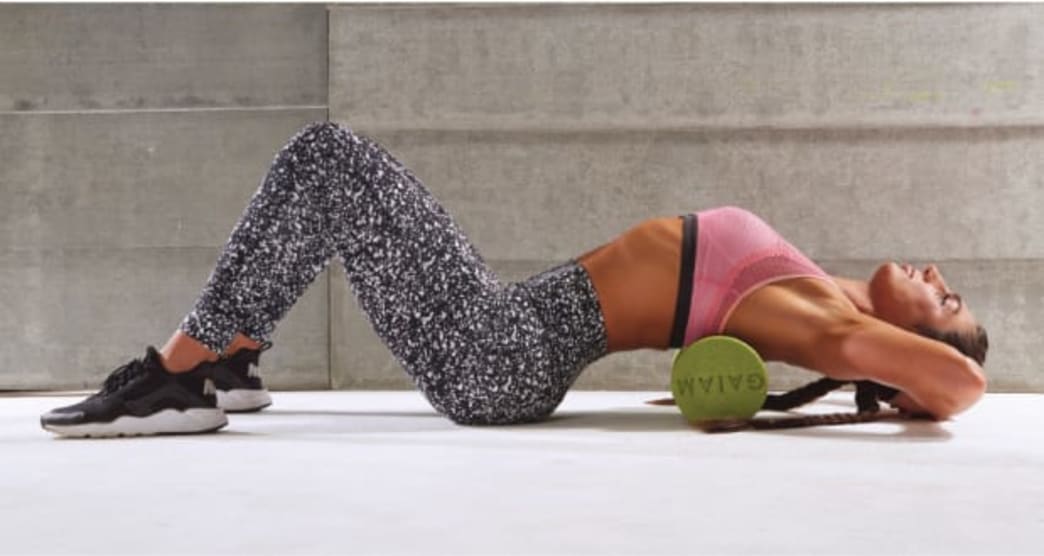 Oxygen Magazine
Oxygen Magazine
Foam-Roller Extension
Do four reps of 30-second holds.
Lie faceup and position a foam roller) underneath you across your shoulder blades. Keep your glutes in contact with the floor as you relax completely over the roller, breathing deeply. With each breath, try to relax a little more and deepen the stretch.
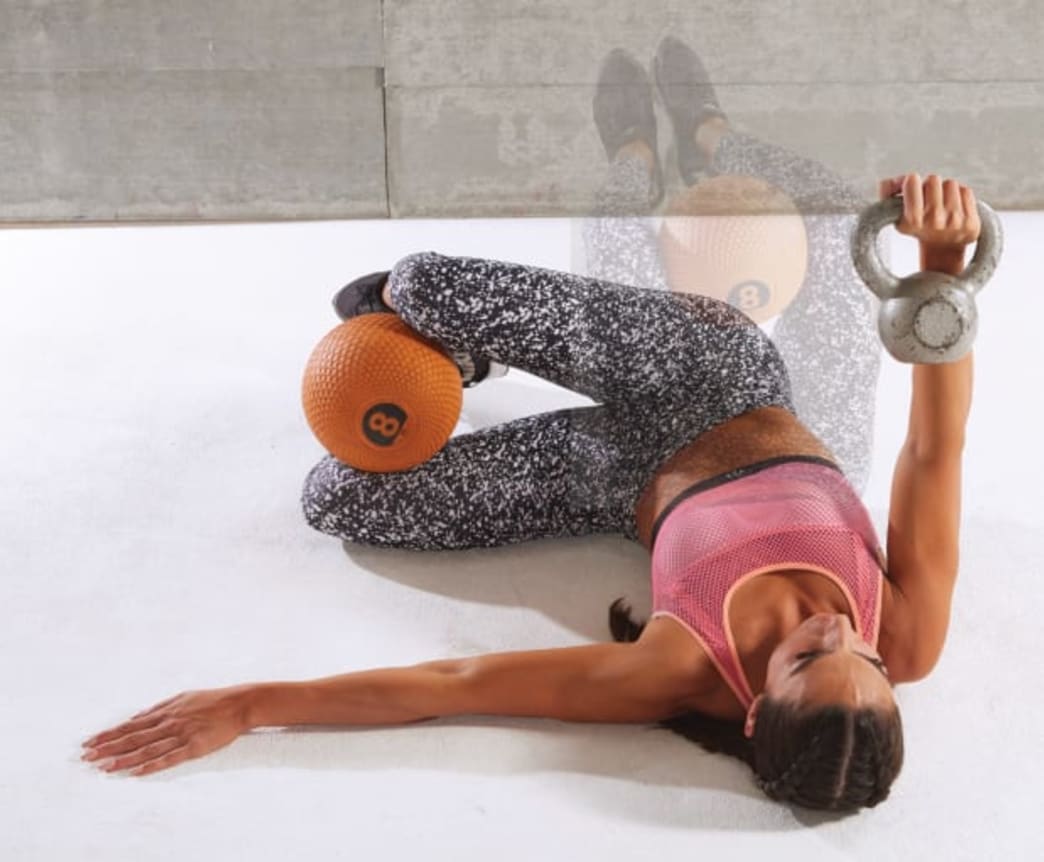 Oxygen Magazine
Oxygen Magazine
Kettlebell Passive Rotation
Do four sets of 10 (each side).
Lie faceup and hold a light medicine ball between your knees. Lift your knees over your hips, legs bent 90 degrees. Hold a kettlebell in one hand over your shoulder and extend your other arm straight out to the side, palm down. Press both shoulders into the floor and keep your raised arm straight as you slowly lower your knees away from the loaded arm toward the floor. Gently touch them to the ground, then return to the start. Do all reps on one side, then switch.
Lumbar Spine
Your lumbar spine consists of five, thick vertebrae, and its function is to support the weight of your torso and head — a tall order for just five links in the chain. Now add to that the already burdensome job an overhead load such as with a squat or shoulder press and you’ll understand why the lower back is the most often injured area of the spine.
The lumbar spine can rotate, flex and extend, but even though it is pretty mobile, using correct exercise form is essential. You probably already know that when setting up for a squat or deadlift, a rounded back is quite dangerous. However, overcompensating by arching your back is no better and can cause vertebral compression, tilting the pelvis forward quite aggressively and shutting down the glutes and lower abs.
This move trains your lower back to resist excessive arching. Do it preworkout to wake up your core muscles in preparation for lifting.
Practical Applications
Designing your workouts to support spinal health is imperative if you want to remain erect into your 90s (and beyond). Here are some factors to consider when planning your programming.
Superset Smarts
Supersets are an excellent technique for boosting intensity and volume, pairing two moves back-to-back that focus on the same muscle group. However, if you’re lifting heavy, your spine endures a lot of compression, so the best way to do a superset is by pairing a move that has a heavy spinal load with a move that has a light spinal load. This allows you to maintain proper form and still get great results.
Perform four sets of 10 reps apiece of each move in your superset. For a loaded carry, shoot for 45 to 60 seconds for each of four rounds.
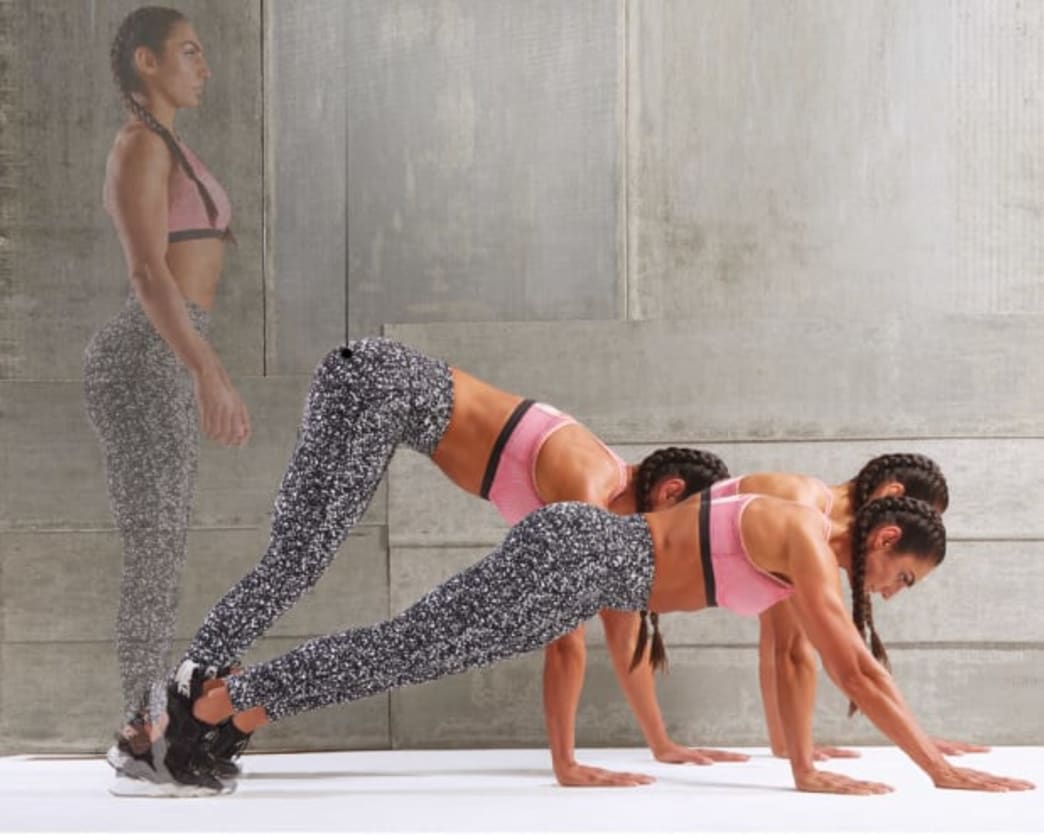 Oxygen Magazine
Oxygen Magazine
Extended Plank Walk
Do four sets of six to eight reps.
Stand with your feet hip-width apart, arms at your sides. Fold forward and plant your hands on the floor in front of you. Maintain a neutral spine as you walk your hands away from your feet until you come into plank (hands underneath your shoulders and your head, hips and heels aligned), then walk your hands out two to four more steps so you’re in an extended plank. Hold for three seconds, keeping your core tight and squeezing your glutes so your hips stay in position, then walk your hands all the way back to your feet. Either stand up and regroup or just go right into the next rep.
Time Your Training
You might have heard people say that they are taller in the morning and shorter at night, and there is actually some truth to this: Lying horizontally for eight hours allows the spine to decompress, and as it relaxes, excess intervertebral fluid enters the disks, making it stiff upon waking. This fluid needs time to drain off before you exercise because you are at greater risk for disk impingement or even herniation when your spinal column is rigid.
For this reason, doing heavy squats and deadlifts at 6 a.m. may be doing your spine more harm than good. These vertical pushing movements place a direct load on the vertebrae and are usually the lifts people try for the heaviest weights. If possible, get up two hours before you work out. Can’t make that happen? Either focus on lower-compression movements or put your big lifts to come last on the menu, focusing more on form and reps than on weight.
Move Forward by Not Moving
Isometric training — creating force against an immovable object — can be a big help in the quest for spinal health, with very little risk for injury. Asking your trunk muscles to resist unwanted forces by simply holding form is a wiser training directive than asking them to create force and make the spine move — for example, a plank or a side plank versus a twisting ab crunch.
Training your body to be stronger in the most difficult part of a lift is a good use for isometrics. Take a deadlift, for example: The bar starts on the floor, and since gravity is doing its best to keep that bar grounded, getting it to move upward is the most difficult point of the lift. Once in motion, kinetic energy helps generate momentum during the rest of the movement. So isometric work helps build power and muscle recruitment where you actually need it most.
You can use isometrics as part of your movement prep or as their own workout entirely. In any case, do moves like these two when your muscles are fresh and ready to produce maximal force in a safe setting.
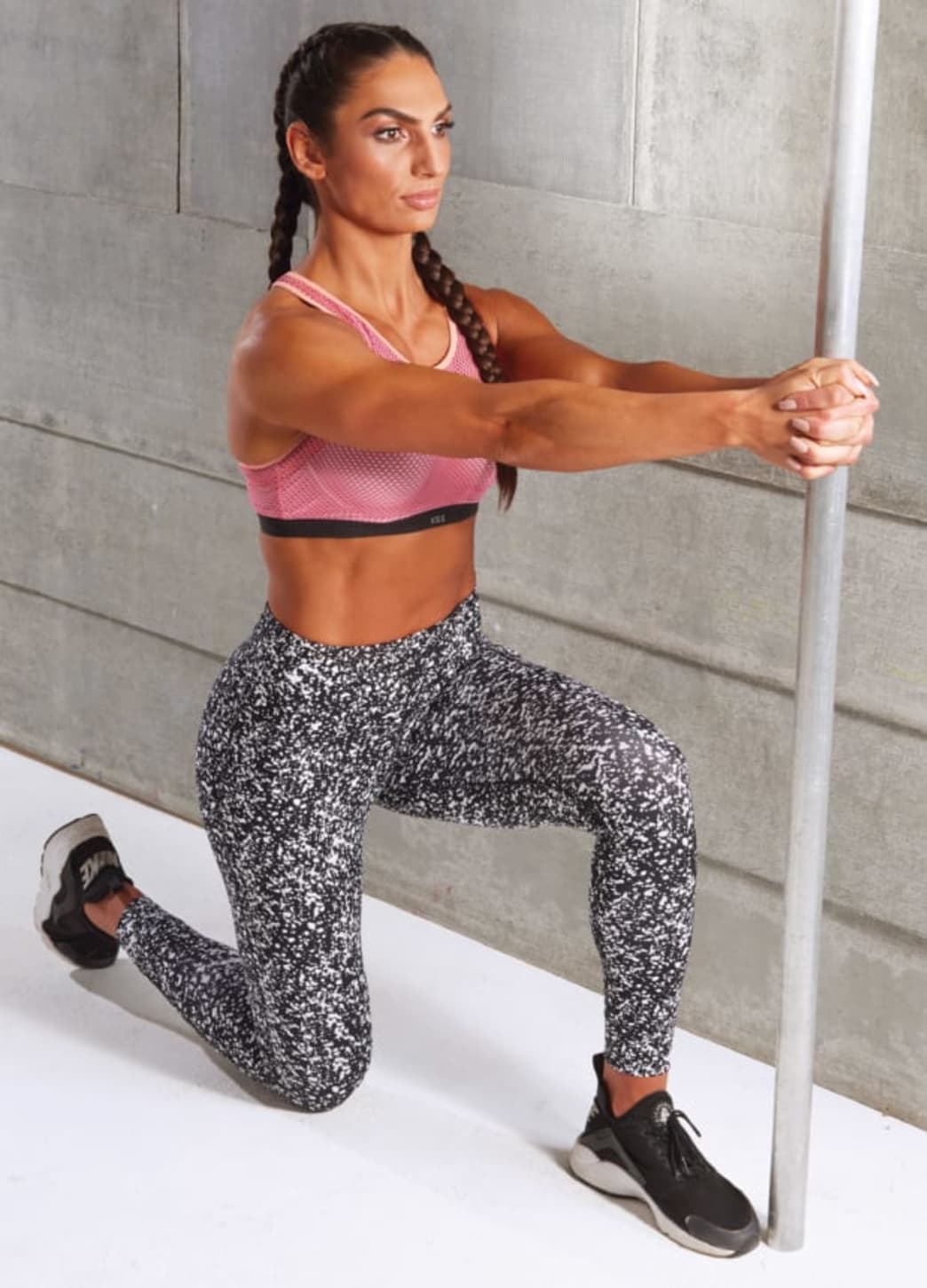 Oxygen Magazine
Oxygen Magazine
Isometric Half-Kneeling Rotation
Do five sets of 15 seconds (per side).
Assume a half-kneeling position with your left leg forward next to an immovable object such as a pole, doorway or squat rack. Extend your arms in front of you at shoulder height and link your hands, positioning them on the right side of the pole. Apply pressure into the beam with straight arms by engaging all the muscles that would cause you to rotate to the left without actually moving. Imagine you want to push right through the pole. Release, rest briefly, then repeat.
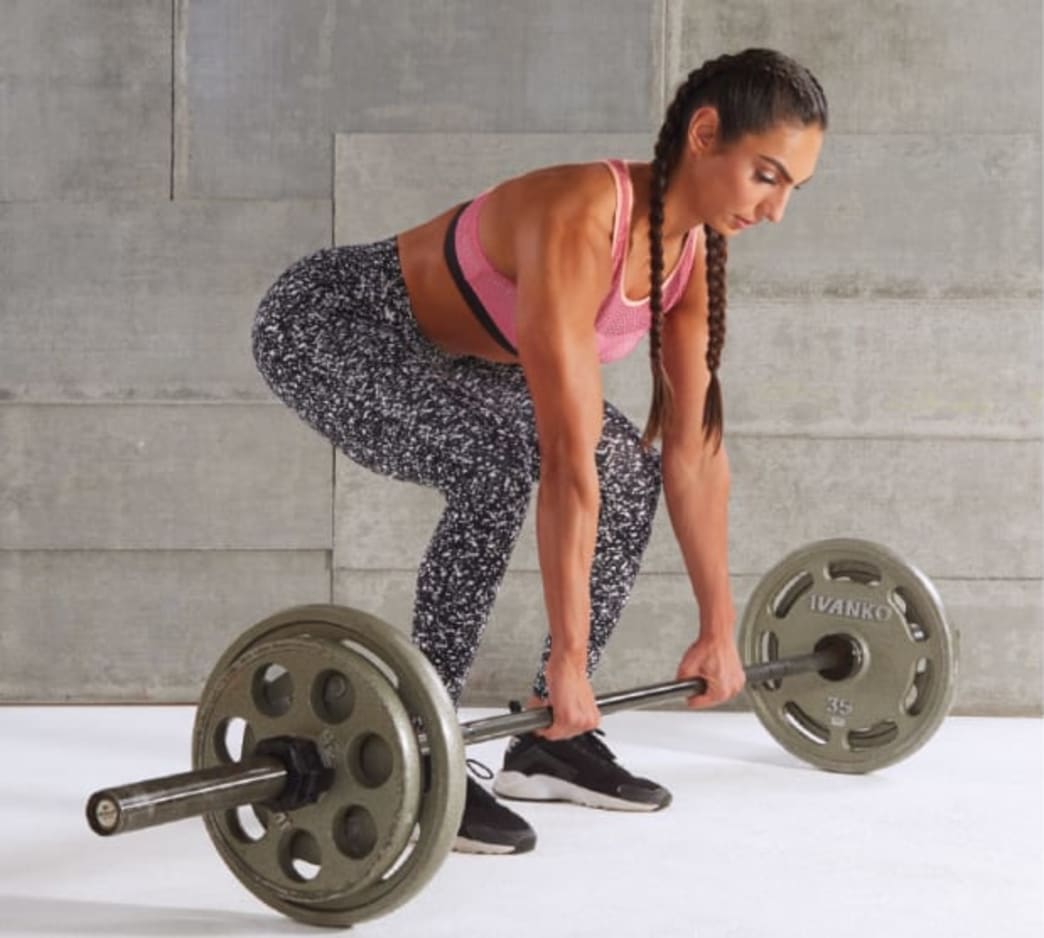 Oxygen Magazine
Oxygen Magazine
Isometric Deadlift Pull
Do six sets of 10 to 15 seconds.
Load a barbell with 50 percent more weight than you can lift for your one-rep max so there is no way you can move it. Stand with your toes under the bar and grasp it outside your legs in either an overhand or an alternating grip, shoulders over the bar. Your knees should be slightly bent, hips higher than your knees, head aligned with your spine. As if you were going to do a deadlift, contract all your muscles and pull upward as hard as you can for a full 10 to 15 seconds. Release, rest briefly, then repeat.
Written by Lee Boyce for Oxygen Magazine and legally licensed through the Matcha publisher network. Please direct all licensing questions to legal@getmatcha.com.
Featured image provided by Romina Farías
Support a Healthy Spine with MariGold!
Proper nutrition is an essential key to the maintenance and health of the spine.
Protein is a key building block for body structure, so consuming enough protein in your daily diet is critical for maintaining, healing, and repairing bones, cartilage, and soft tissues.
Our MariGold Whey Isolate is a great way to make sure you’re getting enough premium quality protein. Our protein powder is 100% pure, and derived from milk given from Truly Grass-Fed™ cows. It is cold processed, micro filtered, undenatured, and incredibly creamy.
It mixes easily into your favorite recipes or shakes for a delicious protein boost. It is also rBST free, antibiotic free, lactose free, soy free, and gluten free.
Our protein bars are also a great, on-the-go snack for extra protein.
Supplementing with collagen can also help restore ease of movement in the spine by replenishing joints and connective tissue, including cartilage and tendons. Our MariGold Collagen Peptides is made with Type 1 & 111 bovine collagen to help to support healthy skin, hair, bones and joints.
Magnesium is a mineral that also plays a very important role in the health of your spine. Your body needs it in order for the muscles to properly contract and relax. It also helps to maintain muscle mass right along with bone density.
Our Dark & Salty and Double Fudge Brownie protein bars contain organic dark chocolate that is rich in magnesium. Our Salty Caramel bar has magnesium-packed cashews and is a tasty way to get a magnesium boost. Our Mint Chocolate Chip Fat Bombs are also potassium & magnesium rich.
Last but not least, is another spine-healthy ingredient: L-Glutamine. Our protein bars contain L-Glutamine, which is involved in the biological processes that control cell growth and repair. It nourishes and serves as fuel for both the skeletal and smooth muscles.


